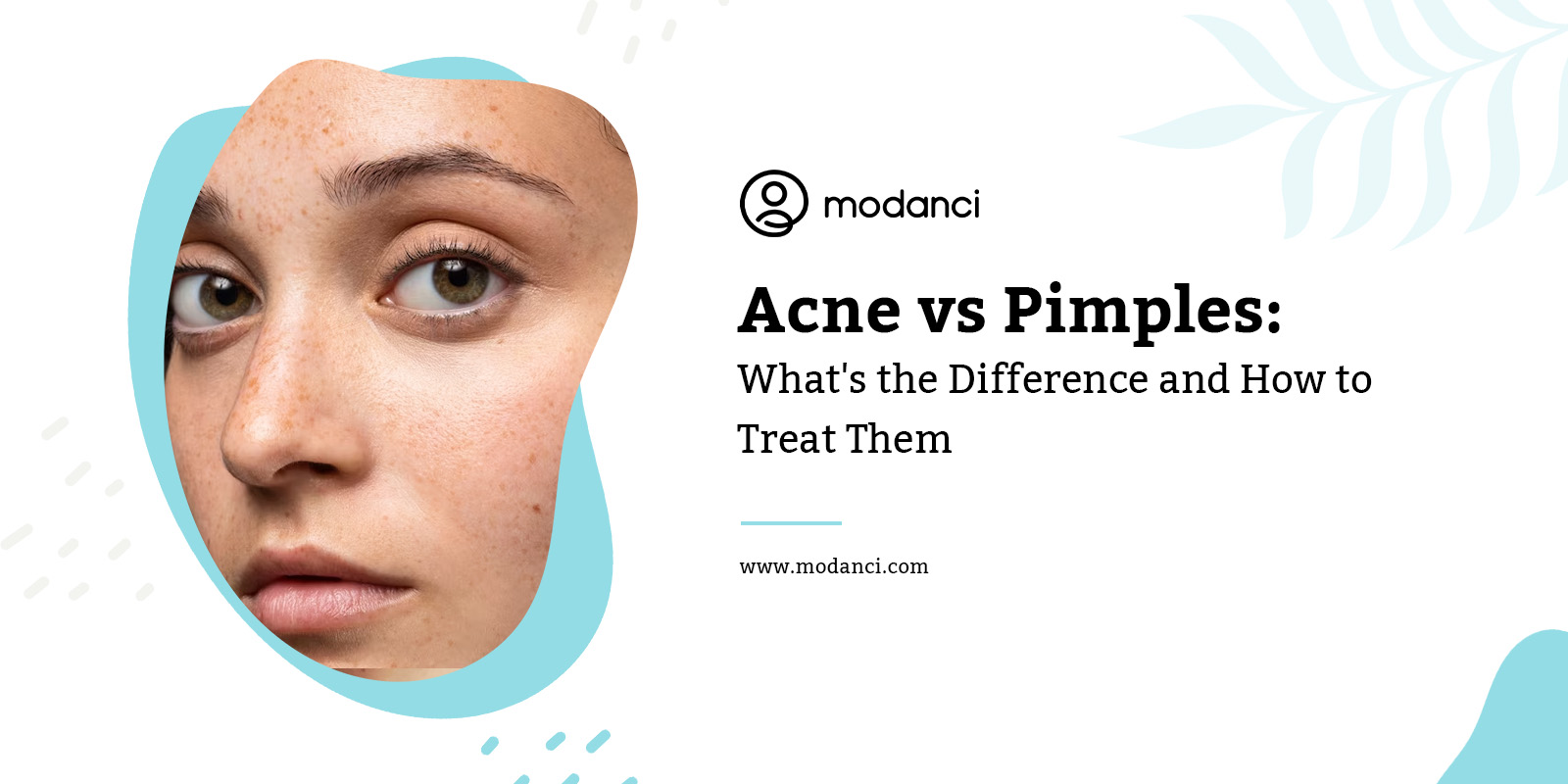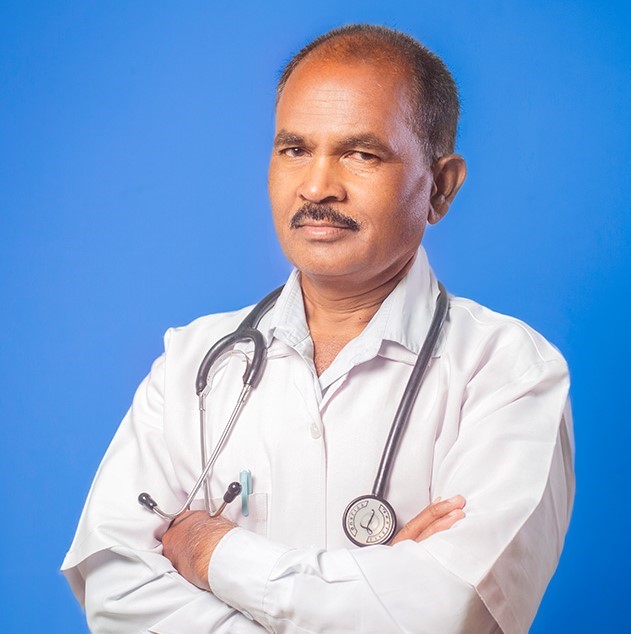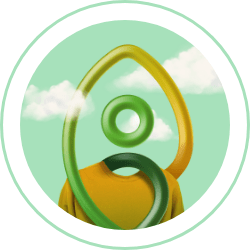The terms “Acne” and “Pimples” are commonly used interchangeably, leading to a misconception that they are the same thing. However, they are distinct skin conditions. Acne is considered a disease, whereas pimples are just one of its symptoms. Acne occurs when skin pores are blocked by excess sebum, dead skin cells, and pollutants, and it can affect people during adolescence or adulthood, regardless of their skin type. In this blog post, we aim to clarify the differences between acne and pimples and provide insights into their treatment. Join us as we explore these concepts further!
Whats the Difference?
Distinguishing between acne and pimples based on appearance and location can be helpful in understanding the nature of the skin condition. Here are some characteristics that can help you tell the difference:
1. Appearance
- Acne
Acne is a broader skin condition that includes various types of blemishes such as whiteheads, blackheads, papules, pustules, nodules, and cysts. These blemishes may vary in size, color, and texture. Acne typically presents with a mix of these different types of blemishes on the skin.
- Pimples
Pimples, on the other hand, specifically refer to the small, red, inflamed bumps on the skin caused by clogged pores and bacterial infection. They are a specific type of acne, and they tend to be uniform in appearance, appearing as small red bumps with or without a white center.
2. Location on the Body
- Acne
Acne can appear on the face, neck, chest, back, shoulders, and even other parts of the body. It tends to be more widespread and may involve multiple types of blemishes in different areas.
- Pimples
Pimples are a common form of acne and are often localized on the face, particularly on the forehead, cheeks, chin, and nose. They may occasionally occur on the back and chest as well, but they are most commonly seen on the facial area.
In summary, acne is a comprehensive skin condition encompassing various types of blemishes occurring in different body areas. Pimples are one specific type of blemish that usually appears on the face but can also occur on other body parts. If you notice a wide range of blemishes on different areas of your skin, it is likely to be acne. However, if you predominantly have small, red, inflamed bumps on your face, it’s more likely to be pimples, which are a subset of acne. It’s always best to consult an Ayurvedic Physician for a precise diagnosis and appropriate treatment.
Treatments and Precations
Excess sebum secretion often leads to frequent occurrences of pimples on the skin. However, one can adopt preventive measures to maintain an oil-free and clean complexion. These methods are universally applicable to individuals aged 15 and above, and they do not necessitate elaborate arrangements to be effective.
Following are a few simple things that you could incorporate in your skincare regime to remove pimples and prevent their occurence:
1. Cleansing
The key to healthy skin begins with using a face cleanser, serving as the initial step in an effective skincare routine. Keeping your face clean removes dirt, dust, and bacteria, preventing skin issues like acne. Opt for an oil-free and non-comedogenic face wash to maintain a flawless skin texture. Rinse your face twice daily, particularly in the morning and evening routines, avoiding vigorous rubbing. Instead, pat dry with a clean and dry washcloth for best results.
2. Choosing Skincare Products
Choose skincare products that are free of toxins and harmful ingredients. If you have acne-prone skin, opt for ingredients like salicylic acid, glycolic acid, and benzoyl peroxide, as they are highly effective in treating pimples. However, you may experience a slight tingling sensation when using them for the first time. Avoid skincare products containing alcohol, sulfates, minerals, parabens, phthalates, and artificial fragrances to minimize the risk of potential side effects. Prioritizing toxin-free products can promote healthier, clearer skin.
3. Moisturize
Many individuals with oily or acne-prone skin often believe that they don’t require moisturizer due to the skin’s excessive sebum production. However, using numerous skincare products can actually lead to faster skin dryness. Therefore, it is crucial to opt for an effective and lightweight moisturizer that won’t clog pores.
4. Use Sunscreen
The skin can be damaged by the sun’s ultraviolet rays, leading to inflammation, redness, and itching. To safeguard your skin from radiation and minimize signs of aging, it is advisable to wear sunscreen with SPF 30 daily, preferably the one with PA +++ protection.
5. Dont touch your Face
Many of us unknowingly exacerbate pimple problems by touching or popping them without realizing the consequences. Our unclean hands can transfer bacteria to our faces, leading to further complications. To avoid this, it’s essential not to touch your cheeks or chin with unwashed hands. Additionally, no matter how tempting it may be, refrain from squeezing or popping a pimple.
6. Makeup in Moderation
Using greasy cosmetics or products containing harsh chemicals can lead to the development of acne and pimples. If you prefer to wear makeup, opt for natural or non-comedogenic products. Always remember to thoroughly remove all makeup before going to bed.
7. Hair Care
To prevent clogged pores and potential irritation on your face, it’s advisable to keep your hair away from it. Dandruff from the scalp can sometimes lead to pore blockages, especially on the forehead. Therefore, it’s best to pull your hair back and avoid using fragrances or oils overnight, as they may irritate the skin.
8. Diet
Achieving radiant and healthy skin is possible through a nutritious diet. As the largest organ in our body, the skin thrives when nourished with fresh fruits, whole grains, and vegetables. To achieve radiant skin, consider adding 8 to 10 black raisins to your diet either every two hours or with each meal. Black raisins are rich in antioxidants and nutrients that can benefit your skin’s health and appearance.
Conversely, it’s essential to steer clear of processed foods, which are high in sugar and junk, as they can interfere with sebum production and negatively impact skin health. Prioritizing a balanced and wholesome diet can significantly contribute to a vibrant complexion and overall well-being.
9. Hydration
Staying well-hydrated aids in flushing toxins from the body, resulting in healthy and radiant skin. It is recommended to maintain a daily water intake of approximately 2 to 4 liters to support the detoxification process.
10. Exercise
Engaging in physical activities like walking, running, or any form of exercise is beneficial for the body, mind, and skin. Engaging in activities like yoga, specifically focusing on Pranayama, Pran Mudra, and Apan Mudra, can be highly beneficial for achieving healthy and radiant skin. These powerful practices work holistically to improve overall well-being, and their positive impact extends to your skin, promoting a naturally glowing complexion.
These activities aid in detoxifying the body and improve blood circulation, resulting in healthier-looking skin.
11. Controlling Stress
Changes in your lifestyle can have a significant impact on your body’s response to stress. When stress disrupts cortisol hormone levels, it can affect oil secretion, leading to skin issues. By adopting a more mindful approach, focusing on your well-being, and nurturing positive thoughts, you can reduce cortisol levels and promote relaxation for both your mind and body.
In summary, To maintain healthy skin, cleanse with a gentle face wash, use toxin-free skincare products, moisturize, wear sunscreen, avoid touching your face, use makeup in moderation, care for your hair, eat a nutritious diet, stay hydrated, exercise, and manage stress.
Conclusion
In conclusion, understanding the difference between acne and pimples is crucial for effective skincare and treatment. While acne is a comprehensive skin condition with various blemishes occurring in different areas, pimples are a specific type mainly concentrated on the face. By adopting a personalized skincare routine, choosing suitable products, and making lifestyle changes, you can effectively manage both acne and pimples.
Remember to consult an Ayurvedic physician for personalized guidance and treatment options, ensuring your journey to clear and healthy skin is successful. With the right knowledge and care, you can confidently tackle these skin issues and embrace a radiant complexion. You can visit Modanci for personalised skincare tailored to your unique prakruti, addressing problems that are unique to your skin.
FAQs
1. What is the difference between acne and pimples?
Acne and pimples can be distinguished by their relationship, as acne is a medical condition, while pimples are merely a symptom of it.
Acne includes various blemishes in different areas of the body, while pimples specifically refer to small red bumps on the face, primarily on the forehead, cheeks, chin, and nose. Consulting an Ayurvedic Physician is best for a precise diagnosis and treatment.
2. What causes acne and pimples, and are there any risk factors?
Acne and pimples are primarily caused by excessive sebum production, hormonal changes, bacterial infections, and dead skin cells. Risk factors include age (adolescents and young adults), family history, hormonal fluctuations, certain medications, using oil-based skincare products, and diet (high in sugary or processed foods). Consulting an Ayurvedic physician can help address persistent or severe cases.
3. How can I distinguish between mild and severe acne or pimples?
Distinguishing mild from severe acne or pimples involves considering the number of blemishes, frequency of breakouts, scarring, and inflammation. Mild acne has few blemishes and occasional breakouts without scarring, while severe acne is marked by numerous blemishes, persistent breakouts, scarring, and significant inflammation. Consulting an Ayurvedic Physician or a dermatologist can provide a precise assessment and appropriate treatment.
4. What are some effective treatments for acne and pimples?
Effective treatments for acne and pimples include topical retinoids, benzoyl peroxide, salicylic acid, antibiotics, hormonal therapies (for females), isotretinoin, chemical peels, light therapy, extraction, and cortisone injections. But these treatements may have side effects and are mostly prescribed for serious conditions. It is recommended to start with natural and Ayurvedic remedies. Visit Modanci for Personalized skincare solutions.
Read More:
- How to Remove Acne Scars and Reveal Radiant Skin
- Clear Skin Ahead: Expert Tips and Tricks to Remove Acne from Your Face
- Acne Marks vs Scars: Understanding the Differences and How to Treat Them
- The Transformative Power of Skincare: Incredible Acne Scars Before and After
- From Hormones to Diet: Common Triggers of Acne on Face




